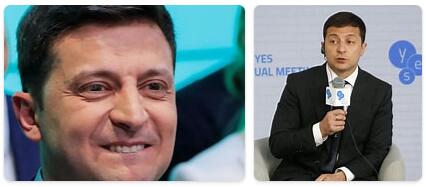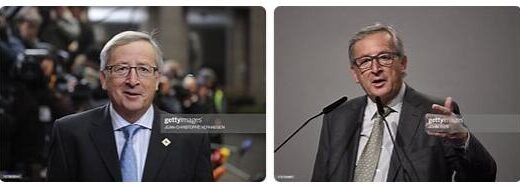Latvia Government and Politics
State and politics

Latvia, in connection with its independence in 1991, returned to the constitution in force in the former Latvian Republic and originated in 1922. In doing so, Latvia wanted to mark legal continuity with the previously sovereign state formation and symbolically eradicate the significance of the 50-year Soviet period. The election to re-establish the republic also had controversial consequences for those who would be considered citizens without having to qualify. Subsequently, during the 1990s, amendments were made to the Constitution, which regulates, inter alia, human rights and freedoms.
GOVERNMENT
Latvia is a parliamentary democracy with a president as head of state. The President is elected according to an electoral system by Parliament and can be elected for a maximum of two four-year terms. The head of state has mainly representative tasks.
The legislative power lies with Parliament, Saeima, from whose majority the government is derived. Saeima consists of a chamber of 100 members elected in proportionate elections for a four-year term. Parliament has a 5 percent block for small parties.
The right to vote in both national and local elections is that of a Latvian citizen and over 18 years of age. Citizenship can be acquired through naturalization, where demands for language skills and loyalty to the Latvian state are tested. In the first election to the free Latvian parliament in 1993, turnout was about 90 percent. However, the large Russian-speaking minority, around 700,000, did not have the right to vote as they were not considered citizens.
Latvia is divided into 26 districts, rajons, and seven municipalities that make up the largest cities. The political forms of government for these regions and municipalities are elected by universal suffrage. Particularly important are the local elections in the capital Riga, which is a power political and economic center in the country.
Policy
The proportional electoral system has given rise to a multi-party system where new parties tend to emerge before each new election (some also disappear). Governments are consistently coalition governments. During the 1990s and until 2002, the Liberal and European-oriented Party Latvia’s Road (LC) returned in all government coalitions, and politics in Latvia is generally dominated by the center and right parties with liberal or conservative views. The nationalist element of politics has been represented by the Party of Fosterland and Freedom (TB/LNNK), which has also been present in most governments but dissolved in 2011.
Ahead of the 2002 election, the former Governor of the Central Bank (and later the Minister of Finance) Einars Repše (born 1961) founded the Party of New Times, which won and formed a coalition government. Its main objective was to put a stop to Latvia’s widespread corruption at political level, to renew the political system and strengthen its integrity. The coalition broke down two years later and was followed by a short-lived government led by Indulis Emsis (born 1952) of the Greens, after which Aivars Kalvītis (born 1966) of the People’s Party (TP) took office as head of government.
Kalvītis formed the government even after the 2006 election but resigned in December 2007 and was succeeded by Ivars Godmanis (born 1951), who was the country’s first prime minister after independence in 1990. After strong protests and riots in Riga as a result of economic hardship, the government fell in the spring of 2009 and another government took office in March 2009. Prime Minister Valdis Dombrovskis from New Times. Prior to the 2010 election, New Times was part of a partial alliance with two other parties under the name Unity. Although the government implemented a number of unpopular reforms in the wake of the financial crisis, including wage reductions and sharply reduced contributions to the public sector, Dombrovsky gained renewed confidence.
Latvia first introduced state aid to political parties in 2012. Instead, the parties existed in close symbiosis with economic interests, which contributed to political corruption. In 2011, a government crisis was triggered after Parliament refused to lift the judicial immunity of three corruption-suspected oligarchs, including former Prime Minister Andris Škēle. President Valdis Zatlers decided to dissolve Parliament and call for a new election. However, Parliament appointed a new President, Andris Bērziņš of the League of Green and Peasants (ZZS), who ruled in unity. Zatlers then formed a new center-right party, Zatler’s Reform Party (ZRP; 2012 shortened to Reform Party), RP), and launched an election campaign ahead of the recent election to Parliament with a stated goal of breaking the oligarchs’ power in politics.
Winning in the recent election became the Social Democratic-oriented and Russian-friendly Party Harmonic Center. Zatler’s reform party became the second largest party while the government parties backed sharply. Through government cooperation between the ZRP, Unity and the right-wing Nationalist National Alliance, Dombrovskis was able to remain as prime minister and head of government.
The Dombrovski government’s economic policy was successful. In 2011 and 2012, the Latvian economy was the fastest growing in the entire EU. Despite some difficulties in holding the majority in Parliament, Dombrovski’s position was strong, which is why his resignation came at the end of 2013 surprisingly. It happened after the country experienced a national disaster when a shopping center in Riga collapsed with more than 50 dead as a result. To some extent, Dombrovski’s departure left the lid on the discussion of responsibility that followed the disaster. Former prime minister, Laimdota Straujuma (born 1951), was appointed new prime minister, who became the country’s first female head of government. She formed a broad center-right government with representatives from all parties in parliament except the Harmonic Center.
In the regular parliamentary elections in October 2014, the Harmonic Center backed sharply but retained its position as the largest party in parliament. The parties that were part of Straujuma’s government coalition together received 61 out of 100 seats and the new government formed after the election was almost identical to the previous one.
In June 2015, Parliament appointed Raimonds Vējonis from ZZS as new president. He thus formally became the first EU head of state to represent a green party, although the green part of the ZZS is rather to be considered bourgeois liberal. The refugee crisis in 2015 and demands from the EU that Latvia should receive refugees led to dissatisfaction within the government and in February 2016 Straujuma chose to resign. She was replaced by ZZS’s Māris Kučinskis (born 1961).
Ahead of the 2018 parliamentary elections, new parties were formed while others changed their names; The Harmonic Center became Harmony, and Unity called itself New Unity. All three government parties declined sharply, while Harmony again became the largest party. The election’s big winner was the newly formed populist Who owns the state? (KPV LV) and the New Conservative Party (JKP; founded before the 2014 election), both of which received about 14 percent of the vote and 16 seats each, as well as the new Alliance For Development/ For!, which received 13 seats.
Government formation took off over time and after the failure of JKP and KPV LV, the assignment went to Krišjānis Kariņš (born 1964), representing New Unity. In January, Kariņš, who was Minister of Economy in 2004–06, formed a new center-right government with ministers from New Unity, JKP, For Development/For !, KPV LV and the National Alliance.
Since July 2020, the lawyer is Egils Levit’s president. He was previously a judge of the European Court of Justice.
Judiciary
Despite independence gained, Latvia continues to make use of laws from the Soviet era in the absence of other alternatives. However, radical legal reforms in the market economy direction are being implemented. The death penalty is de facto abolished in 1999, but still remains in the legislation for serious crimes committed during wartime or war-like conditions. The last execution took place in 1996.
Heads of State
Presidents
| 1922-27 | Jānis Čakste |
| 1927-30 | Gustav’s Zemgals |
| 1930-36 | Albert Kviesis |
| 1936-40 | Kārlis Ulmanis |
| 1990-93 | Anatolia Gorbunovs * |
| 1993-99 | Guntis Ulmanis |
| 1999-2007 | Vaira Vīķe-Freiberga |
| 2007-11 | Valdis Zatlers |
| 2011-15 | Andris Bērziņš |
| 2015-19 | Raimonds Vējonis |
| 2019- | Egils Levits |
* President of Parliament.



